“We are really looking for actors with no ego”: Frozen Light’s co-artistic director Lucy Garland discusses the Isle of Brimsker and the importance of accessible, flexible theatre
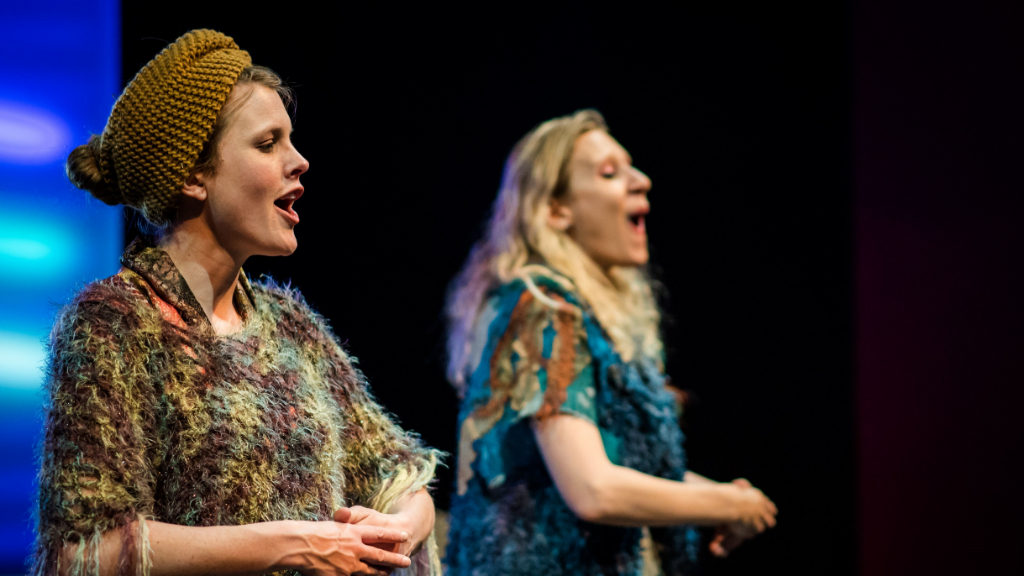
The power of the arts lies in their universal communication of deeply human and aesthetically beautiful content, be it comic or dramatic in tone. It’s a pity, therefore, that some are not able to access the places where this special relationship with the stage can start. There are many obstacles in the way for people with disabilities, from the physical barriers involved in reaching the venue and making use of its facilities, to those related to the enjoyment of the performance itself. Dissatisfied with the current panorama, in 2012 Lucy Garland and Amber Onat Gregory founded Frozen Light with the aim of providing high-quality, age-appropriate theatre for audiences with profound and multiple learning disabilities. For the first time in the Edinburgh Fringe’s history, in 2016 they staged a show that was completely accessible to everyone, specially designed for people with PMLD.
The Isle of Brimsker is the company’s latest production, now on tour around the UK and stopping by in London, at Stratford Circus Arts Centre, in May. The show speaks of friendship and isolation, but also of challenges, conveying the narration and its messages through various multi-sensory storytelling techniques.
We caught up with artistic director and performer Lucy Garland to talk about interacting with the audience, Frozen Light’s growth and how the art world could improve their delivery to people with special needs.
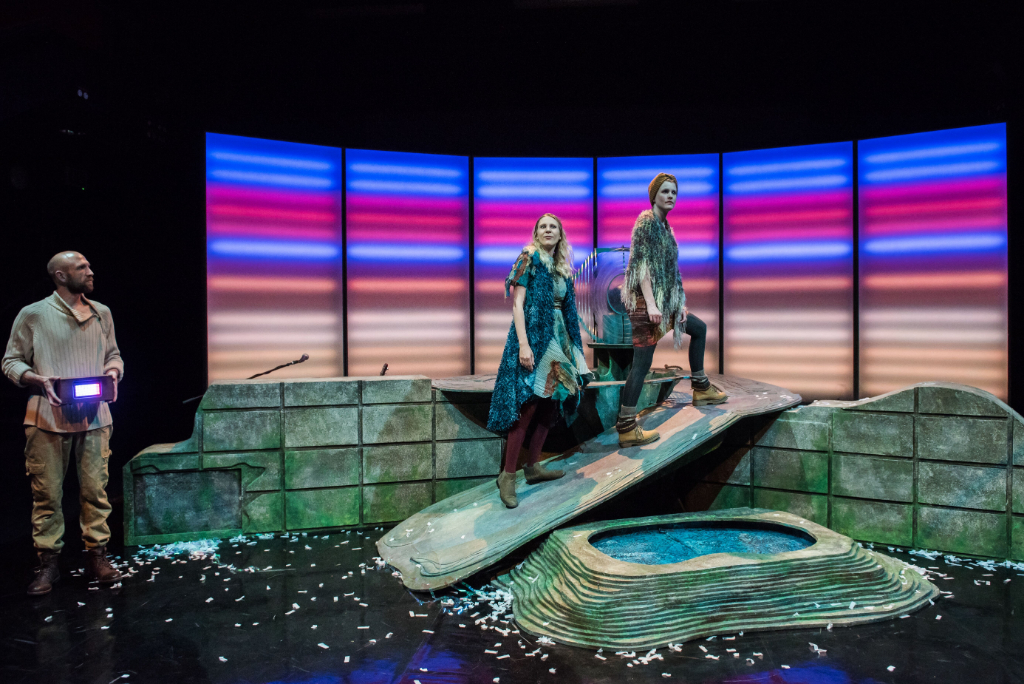
Thank you very much for talking with us! First of all, how would you sum up the story of The Isle of Brimsker?
The Isle of Brimsker is a multi-sensory production for audiences with profound and multiple learning disabilities (PMLD). It tells the story of a lighthouse keeper who lives on a desolate island in the midst of the North Sea with nothing on it but her lighthouse. On the day before the lighthouse is to be decommissioned forever, a runaway washes ashore and an unexpected friendship forms as they help each other to come to terms with the changes ahead. At its heart, The Isle of Brimsker is a story of transition and friendship.
How do you make sure, in terms of techniques and narrative features, that audiences with profound and multiple learning disabilities are able to engage with the show?
It is the multi-sensory element that makes the show accessible for our audience. People with PMLD access the world on a sensory level, so for theatre to be meaningful to them it needs to take place in a sensory world. The multi-sensory is our main access tool for reaching our audience. Each part of our story is underpinned with a sensory moment, and it is these sensory moments that are explored on a one-to-one level between performer and audience. In The Isle of Brimsker these range from vibrating ropes, water dancing in a rock pool to grated ice and water sprayers during the storm.
The one-to-one interaction forms a conversation between the performer and our often non-verbal audience member. As performers we listen (with all our senses) to what the person with PMLD needs from us in that moment – that may be touching a stone with their hand or holding it on their face or smelling it. We are led by them and what they need from us to access the show in a way appropriate to their needs.
On top of the multi-sensory, we also use signing, live music and singing, all of which create levels of access for our audience members. We see our shows as layers and try to provide something that everyone will gain from, so one person may not engage with the multi-sensory props but may be completely engaged with the music, another may not be aware of the narrative story but be 100% involved with the sensory props. Everything we do is an offer for our audience and designed to provide an engaging, accessible theatrical experience for them.
We provide each audience member with a visual story before the show. This includes pictures of the set, characters and explanations of what the audience can expect from the show. This is a tool designed to reduce anxiety and give our audience an idea of what to expect before they arrive, as for many of our audience this may be their first trip to the theatre.
Talking about the casting, what was a key factor in the selection of the performers on stage?
Up until this tour it has always been myself and Amber (my co-artistic director) who have performed in our shows. We have also worked with our super talented musician Al Watts since the beginning, so this current tour was the first time we have brought on a new performer. It has been really exciting for the company to work with new performers and we were lucky to find Sophie Coward, who has been a brilliant addition to the team.
In terms of casting, we are really looking for actors with no ego. Actors who are passionate about audiences and making work for the audience and not for themselves. We aren’t necessarily looking for someone who already has experience of working with people with PMLD, but a performer who is able to put the needs of the audience first before anything else. We look for generous, open performers who are comfortable performing in the moment and are flexible to what the audience need from them at any point in time. We also need people who can sing as all our shows have a strong singing element.
How do you feel the tour of the show has gone so far? And what would you like to be a common message for the audiences across the UK to take away from it?
This tour has been amazing so far; we have been able to reach a bigger audience than ever before and we have even added several new venues to the tour. We are so proud of our production values and have been really excited to bring it to audiences all across the UK.
I would like our audiences to take away a feeling of being valued in a world in which they are often excluded and ignored. It’s important for them to leave having had a meaningful experience with a piece of theatre and the performers who are in it too. Furthermore, we would like the audience to have found something in our show that they were able to engage with and which made theatre accessible to them.
We would also like our audiences to take away the opportunity to access a piece of theatre in their local community. The majority of our audience would find it incredibly difficult to access mainstream theatre and for it to be relevant for them. We want to fill that gap, as we want them to be able to access entertainment that meets their needs.
Can you describe your experience of one of the very first shows from Frozen Light, Tunnels? How would you say The Isle of Brimsker differs from it?
The company has moved on massively since Tunnels. Before starting Frozen Light, both Amber and I performed small-scale, multi-sensory shows in special schools. Tunnels really felt like the show that bridged the gap for us between working in schools and working in theatres. As a show, it worked in schools and theatres but didn’t have the production quality to really fill theatre venues. We toured it with the support of in-house teams and learnt so much, so that when we went to make our second show, The Forest, we were fully committed to making work in theatres. Since then, with every show the production values and quality have improved. The Isle of Brimsker is huge in comparison to Tunnels and we are so proud of the set and the custom-built sensory moments.
The team has also grown. For Tunnels, it really was pretty much just me, Amber and Al. Now with The Isle of Brimsker we are working with a creative team of 13 people overall, including set builder, painters etc.
Since Tunnels, the company has gone from just being Amber and me to becoming a registered charity with a board of trustees and a full-time administrator.
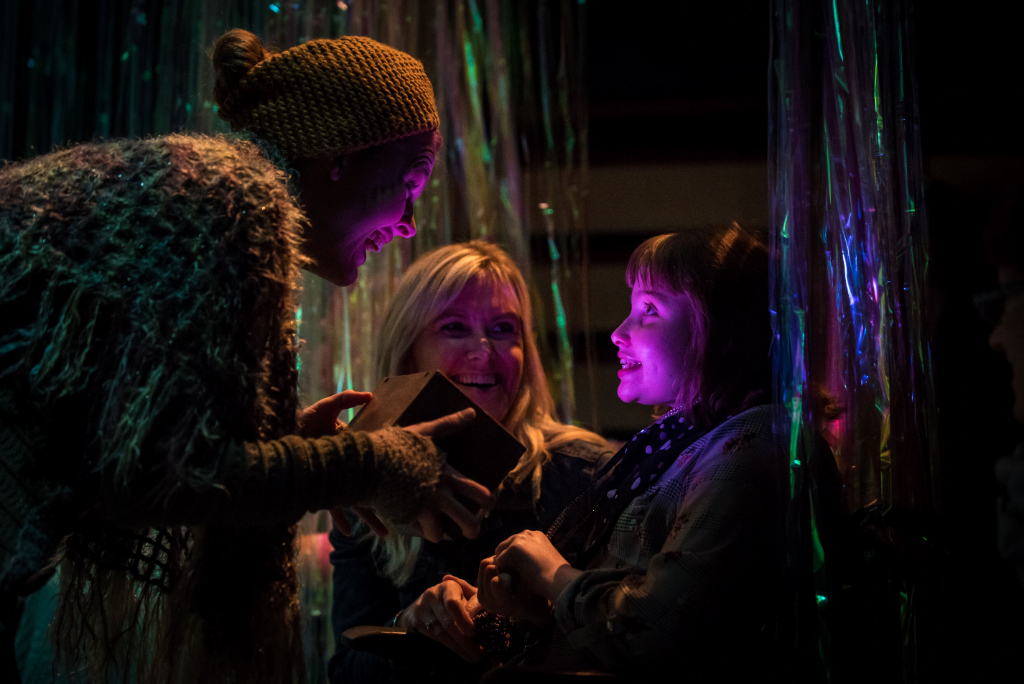
What impact do you feel that your show, the first ever specifically made for audiences with PMLD, has made on the Edinburgh Fringe in general?
That is difficult to say as the Fringe is such a huge festival with so many venues and performances. I like to think that it made people think about access a little bit more and it challenged the opinion that the Edinburgh Fringe isn’t suitable for people with PMLD. Before we performed at Edinburgh, we went for meetings with most of the programmers from the big venues, and were told that it just wasn’t possible to do our work at the Fringe and perhaps our audience should just go to the theatre outside of the festival. This made us very upset, as why should people with PMLD be excluded from the world’s largest arts festival, so we decided to do something about it. Luckily the theatre programmer from The Pleasance came to see our work on tour and totally got on board with what we are doing and made it work for us at The Fringe. Our performance also coincided with the first year that all the Pleasance’s venues became accessible to wheelchair users, so it did feel like a year to celebrate. The following year we returned to the Edinburgh Fringe as part of the British Council Showcase.
What inspired you to join forces with Amber Onat Gregory to start Frozen Light, at the very beginning?
Both myself and Amber studied theatre at university followed by a master’s in applied performance where we worked with a group of teenagers with PMLD, and an amazing mentor called Louise Coigley. Together we developed our multi-sensory storytelling technique. Following this for six years, Amber and I went our separate ways, both continuing doing small-scale sensory storytelling shows in special schools whilst gaining experience working in other areas of theatre (street theatre, clowning, prison work, facilitation). We also both worked as support workers for people with learning disabilities. It was in this role and during our storytelling in schools that we both saw the complete lack of appropriate cultural experiences for people with PMLD in community settings. Myself and Amber came back together in 2012 and Frozen Light was born with the aim of creating age-appropriate multi-sensory theatre in venues for teenagers and adults with PMLD. We both have a huge passion and belief that everyone should have access to cultural experiences appropriate to their needs and wanted to make that happen for people with PMLD, some of the most invisible in our society.
What would you say have been three highlights of the company so far?
Meeting and working with some incredibly talented artists and performers and building a Frozen Light family full of people that genuinely care about our work and audience.
Being the first company to tour a show specifically for people with PMLD to the Edinburgh Festival Fringe.
Connecting with so many amazing audience members and growing a group of parents and carers that really champion us and our work and then seeing these faces again and again when we tour.
What do you think is mostly missing at the moment from the arts world which prevents it from serving audiences with disabilities?
In terms of our work, it is the lack of truly accessible opportunities for our audience with PMLD to be able to access theatre and the arts in general. We are one of a very small handful of companies that tour work for audiences with PMLD to theatre venues and the only ones making work for adults and touring theatre venues extensively. For most of our audience, they only access the theatre once every two years, when we tour, and this is just unacceptable, especially as our audience are hugely loyal and very enthusiastic about accessing appropriate cultural experiences.
It is also worth mentioning the lack of Changing Places toilets. Most of our audience with PMLD cannot use a standard accessible toilet and need a specialist toilet which has more space and the right equipment, including a height adjustable changing bench and a hoist. If this is not available, it greatly reduces the amount of time someone with PMLD can spend away from home or their day centre. Therefore, if a venue doesn’t have appropriate toilet facilities, then that is surely going to be one of the biggest barriers to people accessing any kind of arts experience, or any other trip out for that matter. Can you imagine going to an arts event and not being able to use the toilet? Surely that would be a massive barrier to access. A lot of big arts spaces have the room to build a Changing Places toilet, but surprisingly don’t have them. Out of the 55 venues we have toured to this tour, only four have these facilities.
Finally, what is next for Lucy? And what is next for Frozen Light, after the tour of the current play?
The first thing we are doing towards the end of tour is co-running an event entitled Sensory Symposium – Sensory Theatre for and with audiences with complex needs. This will be happening in June at Capital Theatres, Edinburgh, which is bringing together some really exciting artists and venues to talk about this sector.
Following this tour, Amber and myself are off to New Zealand to work with Touch Compass Dance Company, who are an inclusive dance company that want to bring sensory work for audiences with PMLD to New Zealand as no one is making it there. We will be there for two weeks collaborating with their artists to make a piece of sensory theatre which will then have a life after we leave, which is incredibly exciting and our first time working internationally.
Further to this, in September we will go into development for a commission of an exciting new work for audiences with PMLD, which will see us working in a bit of a different way (watch this space). Finally, In January 2020 we will go into development for our next touring theatre show which will premiere in September 2020. So, a really busy year ahead indeed!
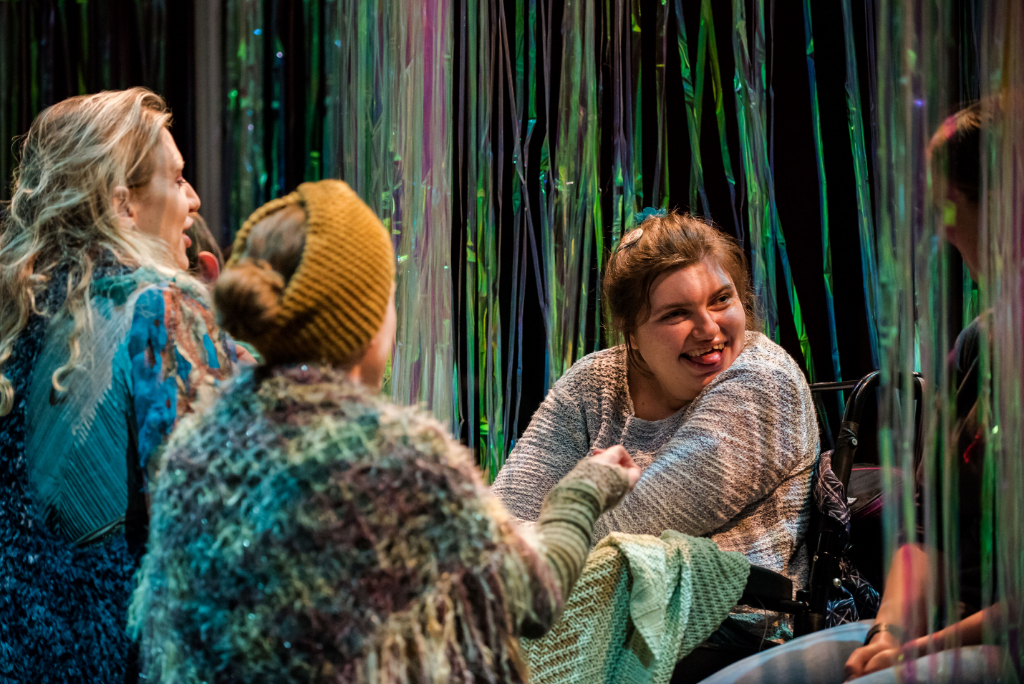
Cristiana Ferrauti
Photos: Courtesy of JMA Photography
The Isle of Brimsker is at Stratford Circus Arts Centre from 3rd until 4th May 2019, and then on a UK tour until June 2019. For more information or to book visit the theatre’s website here.

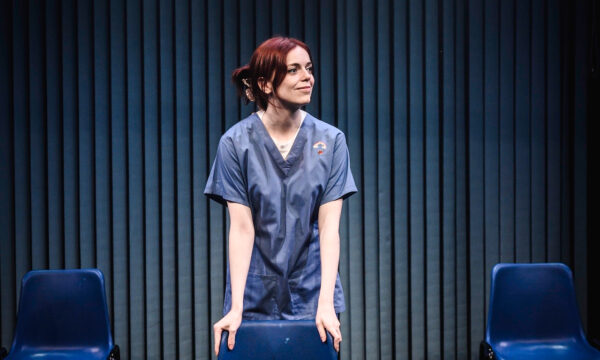
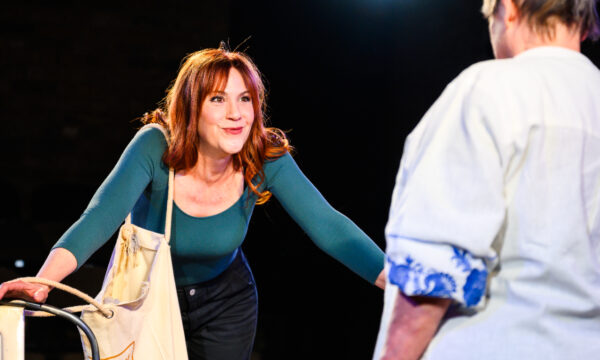
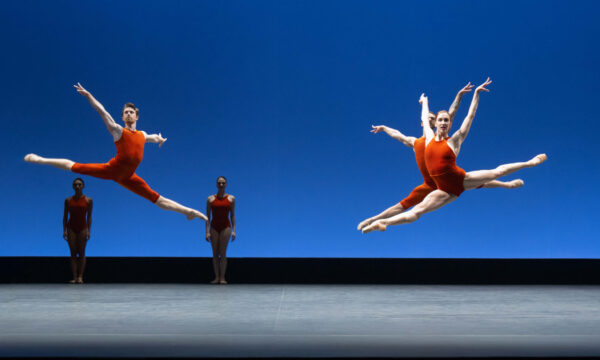
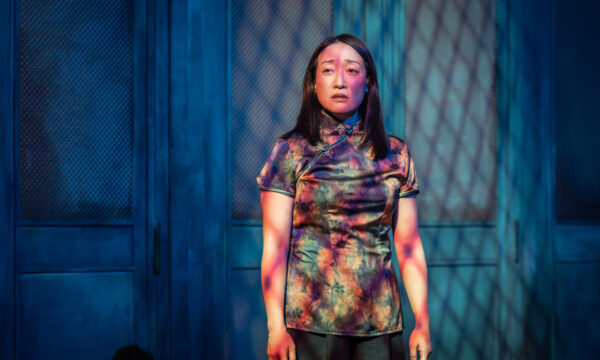
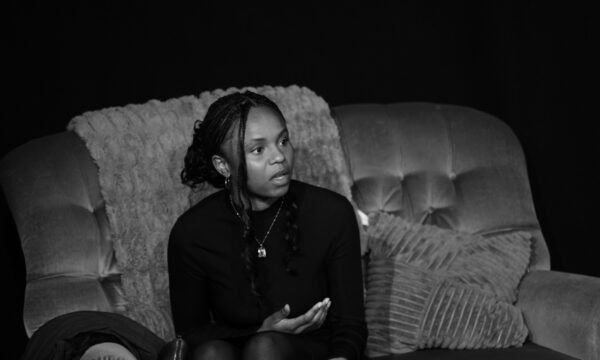
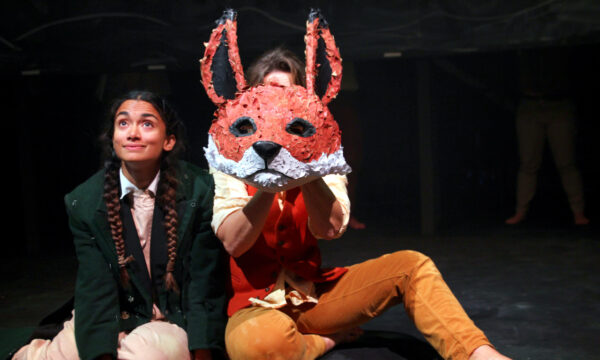
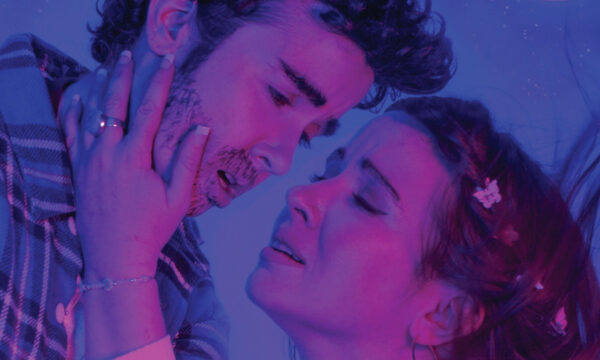
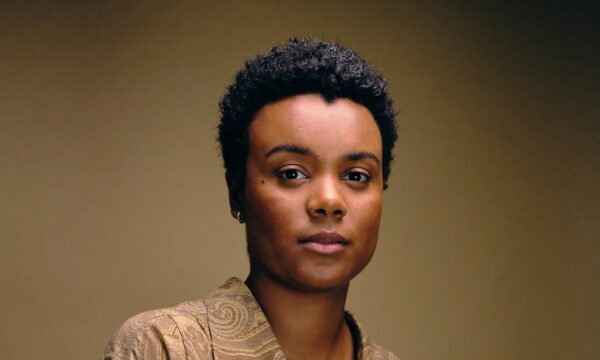















Facebook
Twitter
Instagram
YouTube
RSS